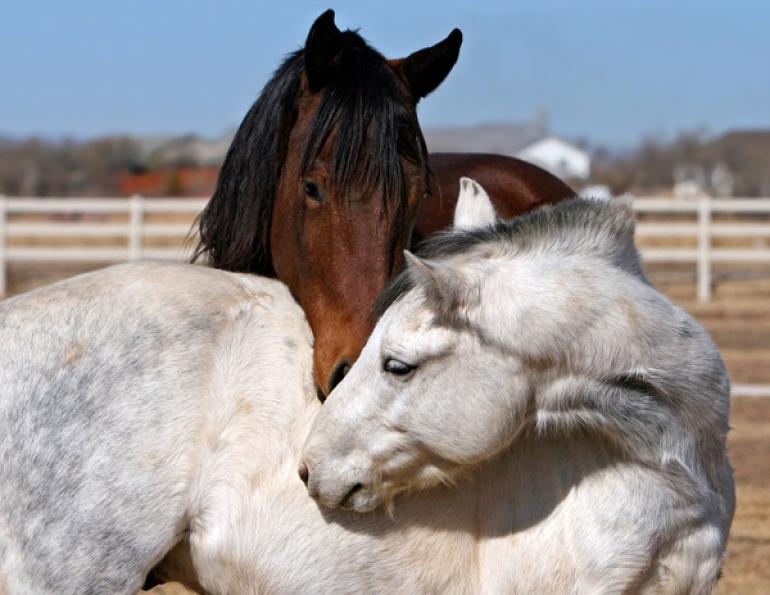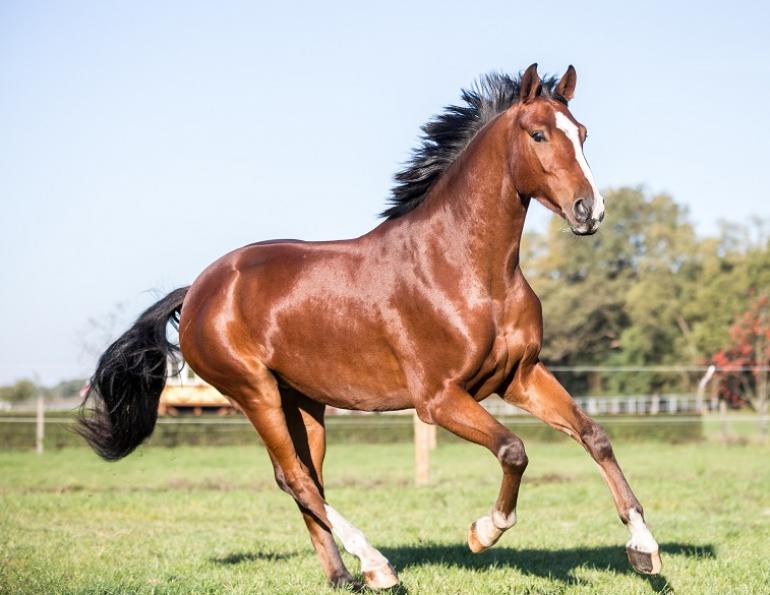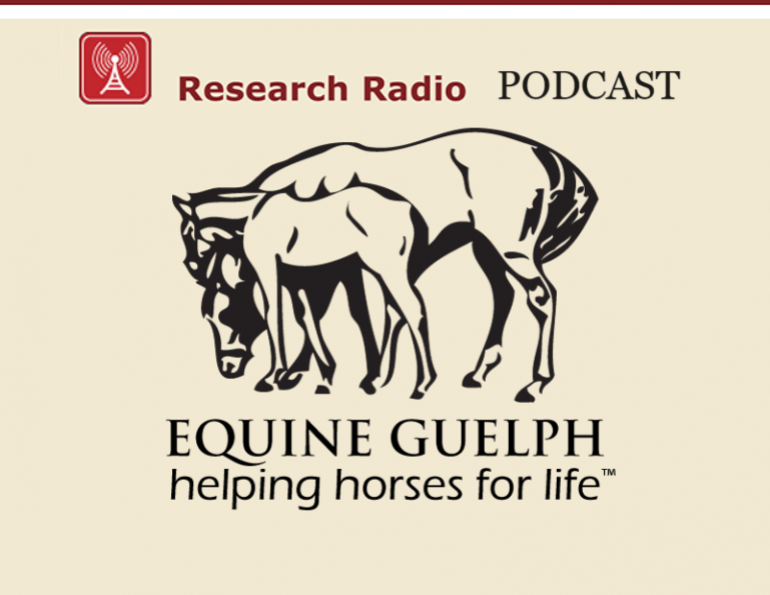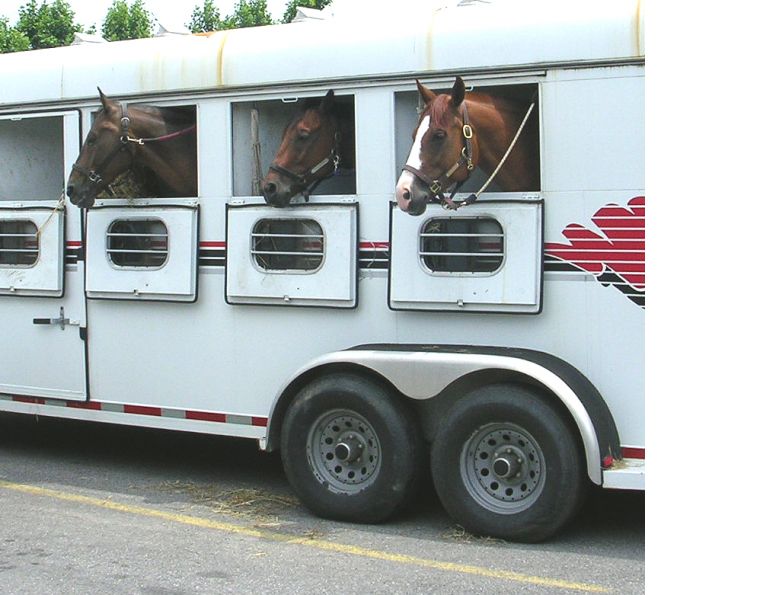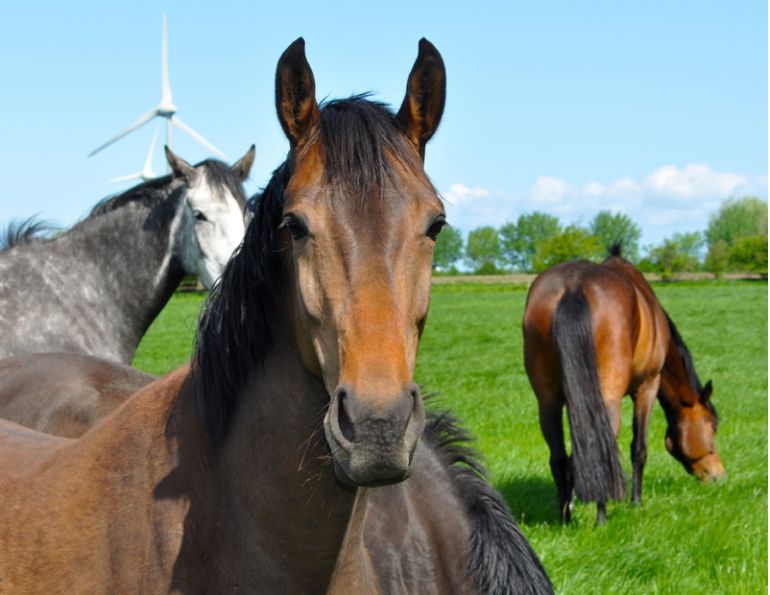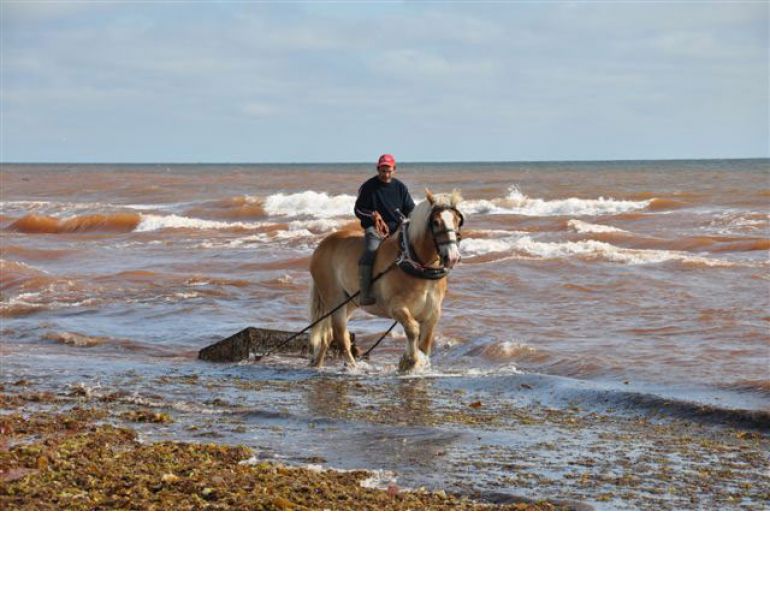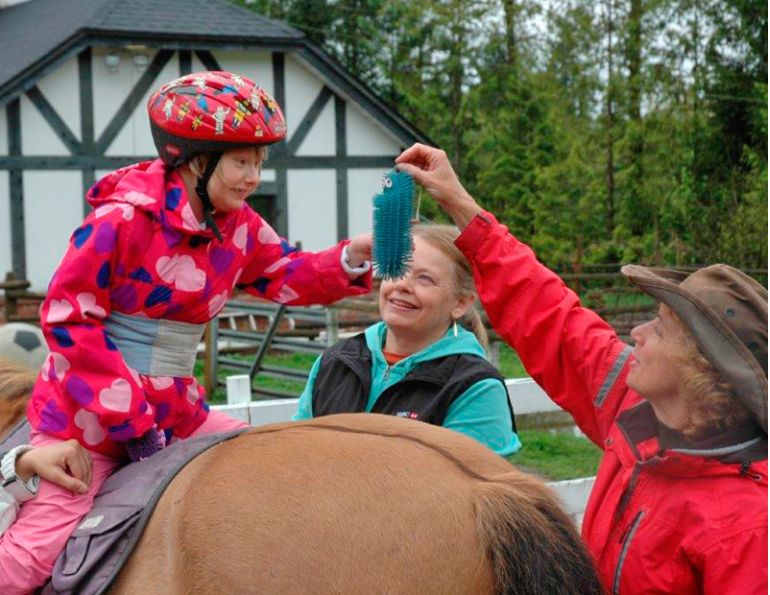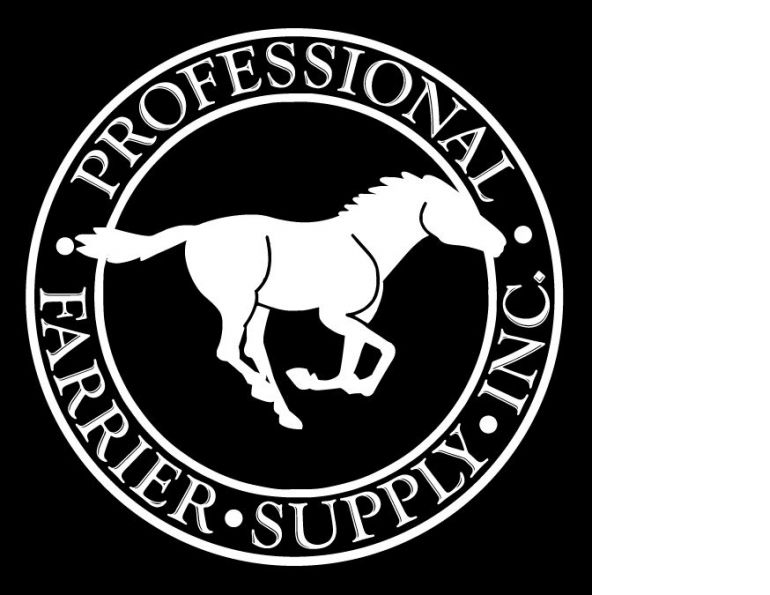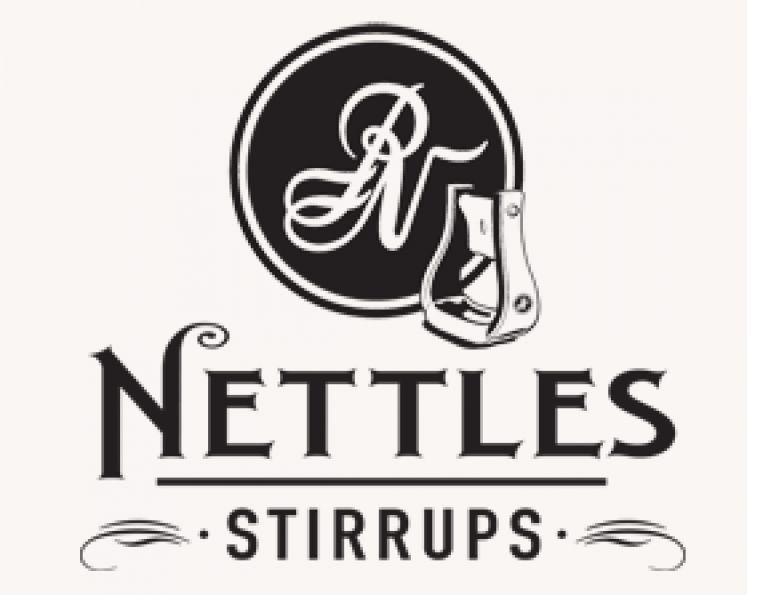By Jess Hallas-Kilcoyne
Horse ownership comes with a considerable expenditure of time, dedication, and money. Managing a horse on a tight budget isn’t easy. Cutting corners in any way that could compromise your horse’s health and welfare is never the solution to saving money. Fortunately there are many thrifty horsekeeping tips that will allow you to plump up your pocketbook without sacrificing on quality care for a healthy, happy horse.
Here are a few to get you started…
FEEDING
The average cost of feeding horses in Canada has been estimated at an approximate total of $101 per horse per month or $1209 annually. This sum was calculated by combining the average cost per horse for hay ($700), non-forage feeds ($368), and feed supplements ($141). Obviously, the cost of feeding varies greatly based on the nutritional needs and job description of each individual horse; however, the following points provide some general suggestions for wallet-friendly feeding.
#1 Always opt for the best quality feed available. Ultimately, feeding cheaper, poor quality hay is false economy because, due to its lower nutrient content and inferior digestibility, greater quantities must be fed in order for the horse to maintain condition.
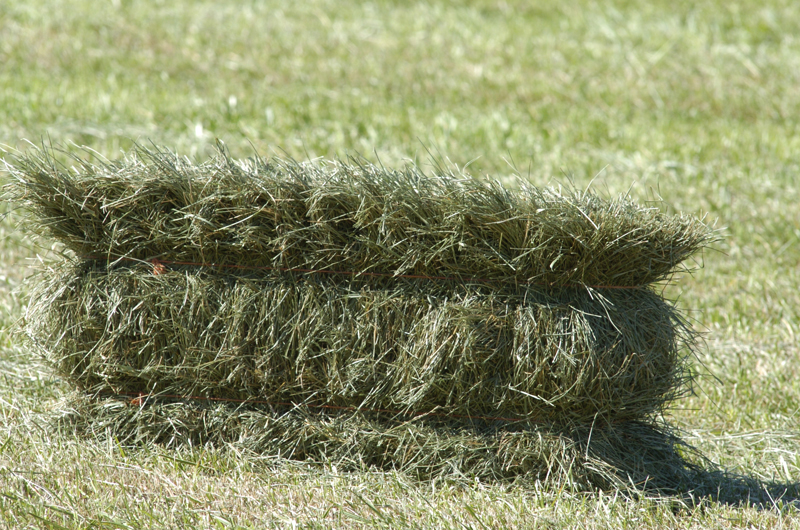
Photo: Robin Duncan Photography
#2 Buy in bulk. Purchasing in large quantities generally allows you to obtain better quality hay, feed, and supplements at a lower cost. If you lack the space for storing hay in bulk, or if you’re unsure whether you’ll be able to use up perishable feed before the expiration date, split the order with a friend, fellow boarder, or neighbour.
#3 Purchase winter hay well in advance. Hay prices steadily increase throughout fall and winter, so the more hay you purchase early on, the more money you’ll end up saving. Stock up on hay in the summer or early fall when hay prices are at their lowest. Buy off the field and transporting the hay yourself for even greater savings.

Photo: Robin Duncan Photography
#4 Pick up your own hay and feed rather than paying delivery fees.
#5 Store hay and feed properly to minimize spoilage and wastage. Stack hay off the ground on pallets to reduce moisture and mold growth. Grain is best stored in metal or hard plastic bins with snug-fitting lids to ensure freshness and keep out moisture and rodents. Keep grain bins away from heat sources as high temperatures can lead to mold and mildew.
#6 Feed by weight, not volume. Feeding by volume often leads to overfeeding, which is not only a waste of money but can also result in an overweight horse. Measure every meal and your horse’s health will benefit, as will your pocketbook.
#7 Favour forage over concentrates. Hay is less expensive to feed than grains and supplements, and more importantly, a diet comprised mostly of forage greatly reduces your horse’s risk of digestive problems, such as colic and gastric or colonic ulcers. Additionally, good quality hay fed in adequate amounts is often enough to satisfy the nutrient requirements of the average horse in light work.
#8 Consider a ration balancer to offset potential deficiencies resulting from an all-forage diet without providing excess calories. Because they contain concentrated levels of amino acids, vitamins, and minerals, ration balancers often negate the need for additional supplementation and they typically have lower feeding rates. Most adult horses can obtain the required nutrients by consuming only one to two pounds of ration balancer pellets daily.
#9 Consult a professional. Your veterinarian or equine nutritionist should be able to help you formulate a feeding program that addresses your horse’s specific needs, giving you the assurance that you’re satisfying his nutrient requirements while avoiding overfeeding expensive concentrates and supplements.
#10 Don’t cheap out on supplements. If, after consultation with your vet or equine nutritionist, it is determined that your horse requires dietary supplementation, you’ll get the best value with a product formulated by a reputable manufacturer and containing high quality ingredients.
#11 Stretch your hay supply with slow feeding. A slow feeder provides free choice access to hay while restricting rate of intake to mimic natural grazing. This helps to reduce the risk of colic and ulcers, while making your hay supply last longer. In addition, slow feeders drastically reduce waste from hay being trampled or used as bedding.
#12 Utilize pasture as forage during the summer. Pasture has a much lower cost per pound than hay and is a great source of forage, so use it to your advantage by substituting pasture grazing for some, if not all, of your horse’s hay during the months when it is available.
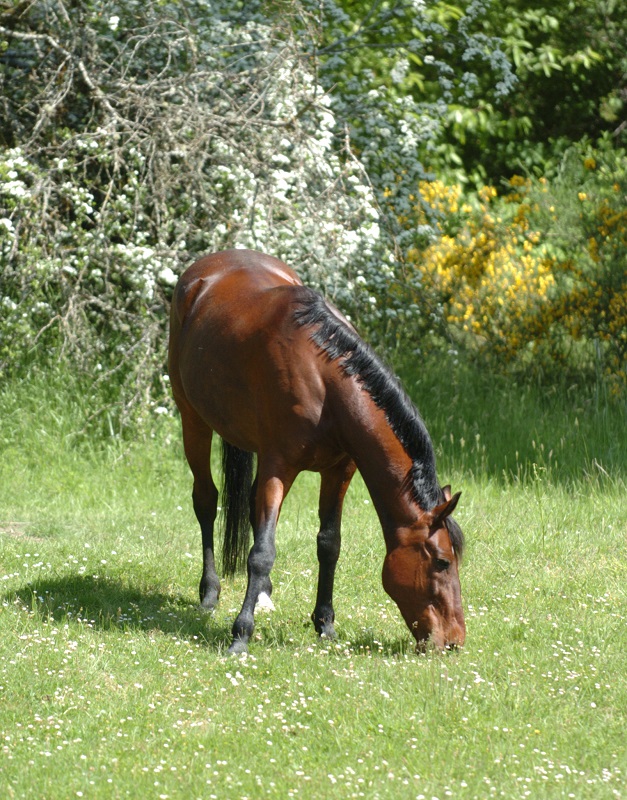
Photo: Robin Duncan Photography
HEALTH CARE
Recent studies indicate that the average horse owner in Canada spends approximately $421 annually on routine veterinary care and vet-prescribed medications, $311 on farrier services, $130 on dental care, and $278 on equine therapies such as massage and chiropractic, for a total of $1140 per horse annually in equine health related expenditures. The cost of equine health care is a significant expense for horse owners, but it is also an area where corners should never be cut for the sake of saving money.
#13 Don’t skimp on veterinary and farrier care. Not only can this compromise your horse’s welfare, but in many cases it can result in higher costs in the long run. Look at annual vet checks, dental care, and vaccinations as an investment that can help save you from the major expense of emergency veterinary care for serious health issues that could have been prevented.
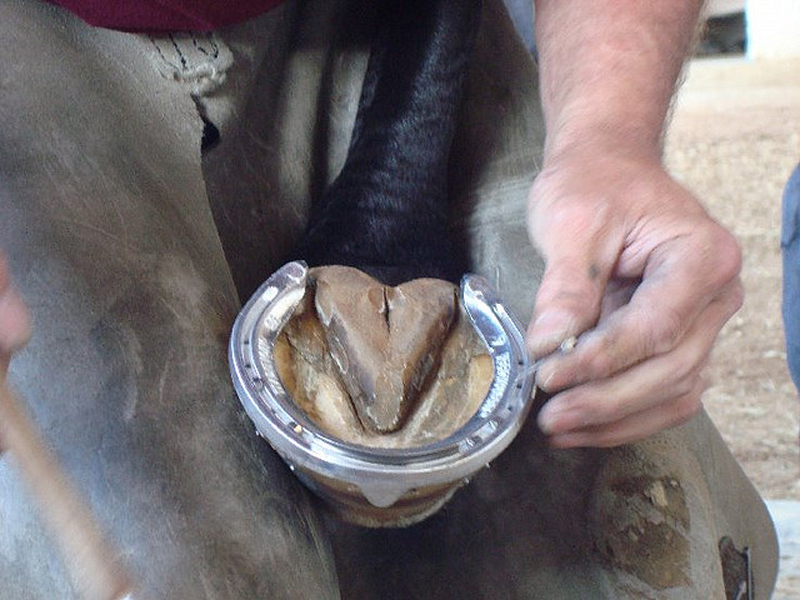
Photo: ©James Woods/Flikr
#14 Insure your horse. You may question whether purchasing equine mortality and/or medical coverage is a worthwhile expenditure, but you will be glad of its protection if the worst should happen and you are left horseless or with an unrideable horse that continues to rack up costly vet bills.
#15 Split farm call fees. Coordinate with other owners at the barn to schedule your vet and farrier appointments for the same date and you can all share in the cost of the farm call.
#16 Vaccinate based on risk. The four so-called “core” vaccines which are strongly recommended for all horses are those for rabies, tetanus, West Nile virus, and Eastern/Western Equine Encephalomyelitis. The other vaccines, called optional or risk-based vaccines, are those for equine influenza, equine herpesvirus, equine viral arteritis, strangles, Potomac horse fever, rotavirus, botulism, and anthrax. Based on risk factors that include geography, age, use, and exposure to unknown horses, your veterinarian will be able to recommend which of the risk-based vaccines are appropriate for your horse.
#17 Deworm strategically. A targeted or strategic deworming program consists of using fecal egg counts to identify horses with a high parasite burden (commonly called “high shedders”) and then treating only those horses with the appropriate dewormer based on the type of parasite eggs present in the manure. This approach helps prevent unnecessary medication of your horse, minimizes drug resistance in parasites, and could save you from unnecessary expense.
#18 Administer deworming medication yourself rather than paying for your veterinarian to do it.

#19 Learn basic equine first aid. In the event that your horse suffers an illness or injury, this knowledge will help you assess whether veterinary care is required and, if so, allow you to attend to your horse until the veterinarian arrives. It is important to remember that first aid is not a substitute for veterinary care, so when in doubt always consult your veterinarian.
#20 Avoid the unnecessary…if you can. If you are writing a cheque for the cost of a full set of shoes for your horse every six weeks, you may dream about cutting back to front shoes only or letting him go barefoot altogether. The unfortunate reality is that not every horse can go barefoot and continue to be ridden on every surface. Ask your farrier’s opinion on whether your horse would be okay without back shoes or barefoot, and be prepared for the possibility that this may not be an area where costs can be cut.
PROPERTY
Approximately 65 percent of Canadian horse owners live on horse property. On average, horse property owners in Canada spend more than $4500 annually on improvements and regular maintenance for their horse facilities.
#21 Keep your barn and horse property clean and tidy. Frequent mucking of stalls and paddocks reduces your horse’s exposure to potential parasites in the manure. Barn tools and implements should always be stored out of the way and barn aisles should be kept tidy and clutter-free to minimize the risk of injury. A clean and tidy property with flammable materials separated from sources of heat and fire also reduces your risk of loss from fire.
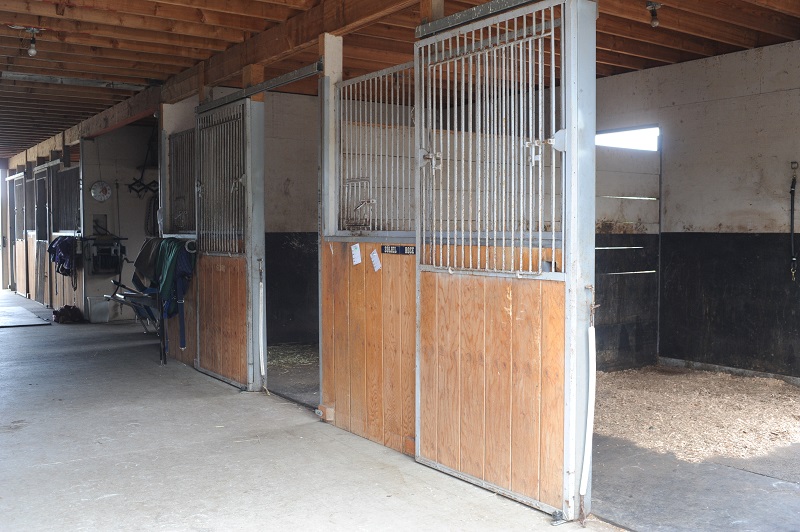
Photo: Robin Duncan Photography
#22 Maximize your pasture. A good pasture management plan will help you make the most of this important forage source by improving pasture productivity and grass quality. Depending on your particular pasture needs, your management plan may include mowing, harrowing, seeding, irrigation, fertilizing, and weed control. A rotational grazing program to avoid overgrazing and a sacrifice area for turnout in wet weather are measures that will benefit any pasture.
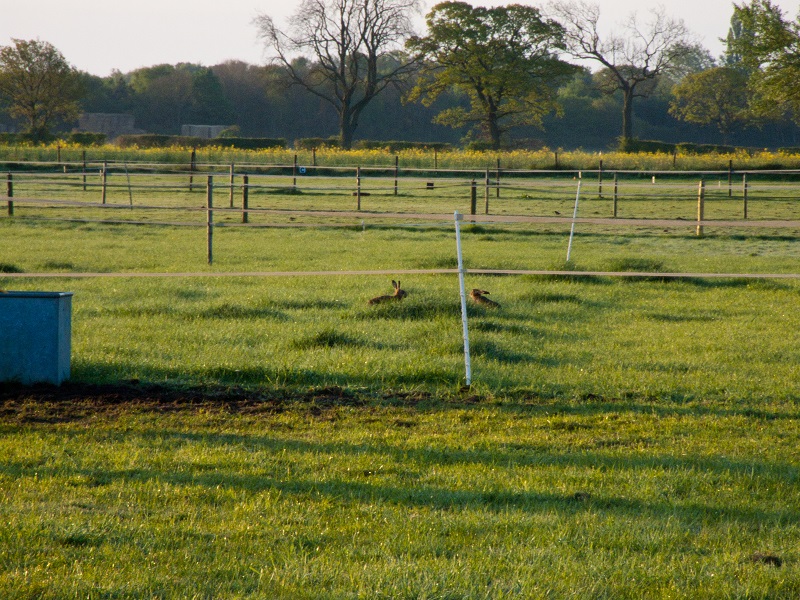
Photo: ©Keith Laverack/Flikr
#23 Install horse-safe electric wire or tape around your paddock. Electric wiring can help protect your fencing and reduce the need for repairs or replacements.
#24 Opt for run-in/out stalls to reduce horse handling costs and give horses the health benefits of fresh air and room to move around.
#25 Don’t delay on repair jobs (even small ones). Left unaddressed, small repairs on a horse property have a way of turning into big repairs and major expense. Keep a list of repairs you’ve noticed and attend to them at least weekly. Fill in potholes in the paddock, remove and replace broken fence boards, and re-hang gates and doors that are difficult to open and close. Carry a hammer and wire-cutters when walking the yard and bang in or remove loose wires and nails to reduce the chances for torn horse blankets and injuries to horses, saving you a lot of money for little effort.
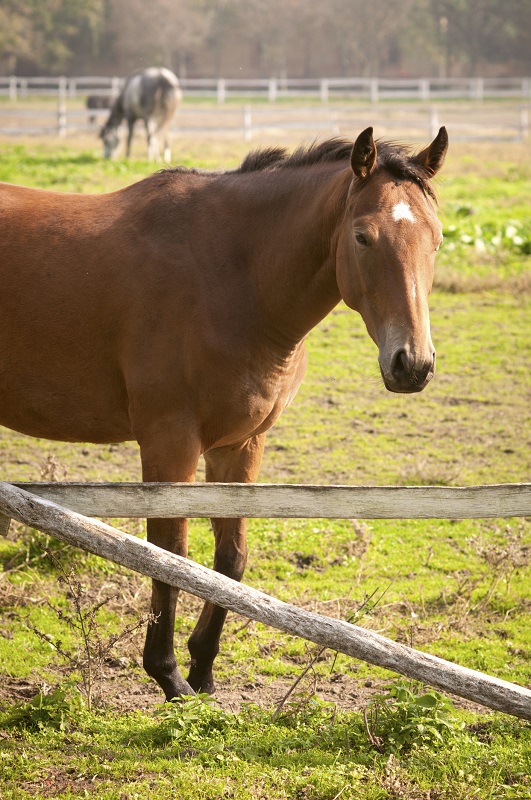
Photo: tucko019/Stock Photos/Photos.com
#26 Invest in good drainage and footing materials to save on the cost of replacing footing. Remember that gravel is a cost-effective footing material.
#27 Swap horse-sitting duties with a neighbour or friend.
#28 Take on a boarder or two. When you calculate the savings, remember to factor in the cost of any additional liability insurance that is needed.
#29 Build your own jump poles, standards, and cavalletti.
#30 Rent your facility. Help cover costs by leasing out parts of your facility that you don’t use, or take on boarders if you have extra stalls. If you have a ring, consider renting it by the hour or by the day to neighbouring equestrians. Keep in mind that you may need extra liability insurance for these activities, so make sure that the numbers add up to a benefit.
UTILITIES
Utility bills may not be the first expense that comes to mind when you think about the costs associated with keeping horses, but they can add up surprisingly quickly. It’s difficult to estimate the average cost of utilities at the barn, but depending on the size and type of facility, you could be looking at spending approximately $400 to $600 per horse per year. By reducing the amount of water and electricity you use around the barn, you can feel good about practicing a more sustainable form of horsekeeping as well as shrinking your utility bills.
#31 Attach adjustable nozzles to barn hoses to reduce water wastage. Spray nozzles are particularly useful in the wash stall to conserve water when bathing horses.

#32 Bathing your horse with a bucket and sponge is even better than using the hose when it comes to saving water.
#33 Check all water fixtures for leaks on a regular basis to prevent unnecessary water loss.
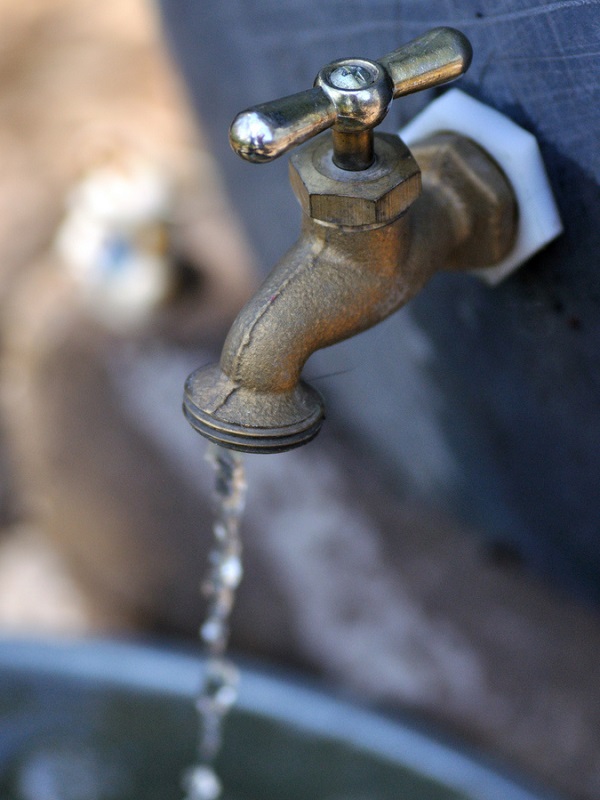
Photo: ©Will Merydith/Flickr
#34 Put stale drinking water to use by watering plants and flowers, or irrigate the pasture instead of dumping it out on the ground when you clean water buckets and troughs.
#35 Install a rainwater collection system. Rainwater run-off collected in rain barrels via a downspout can be used for watering the garden, to perform various chores around the barn, and, in the case of fibreglass or metal roofs, to water horses (NOTE: run-off from composite or shingle roofs should not be used as drinking water for animals). Larger quantities of rainwater can be collected in a cistern and used to irrigate pastures or water the arena or compost system.
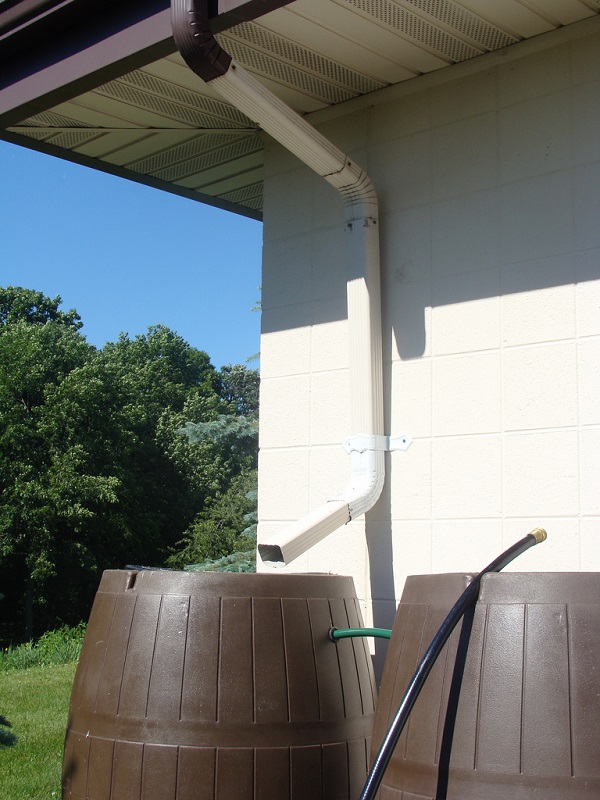
Photo: ©Center for Neighborhood Technology/Flickr
#36 Replace standard incandescent light bulbs with energy efficient bulbs, called compact fluorescent lamps (CFLs). One CFL can save as much as $40 over its lifetime as compared with an incandescent bulb. Light emitting diodes (LEDs) are another high-efficiency light bulb option; they last 100 times longer than CFLs and are equally efficient.
#37 Turn off lights and small appliances when not in use to conserve energy, and equip outdoor lighting with motion sensors and/or timers.
#38 Try turning on only half the arena lights when riding at night, unless you are engaging in an activity that requires top visibility, such as jumping.
BEDDING
There is a seemingly endless array of options when it comes to stall bedding material, which can result in a wide range of expenditures – from $200 to $800. The easiest way to cut back on your bedding bill is to simply reduce the amount of bedding in your horse’s stall, which will in turn reduce the size of your manure pile; however, don’t be so stingy that you compromise your horse’s comfort, hygiene, and safety. Your goal should be to strike a bedding balance.
#39 Invest in stall mats or stall mattresses. They may be expensive to install but they’ll pay for themselves in the savings you will realize by reducing the amount of bedding used. Additional benefits include much easier stall cleaning for you and a cushiony surface for your horse’s comfort and the sake of his joint health.
#40 Bulk is better. As with hay and feed, bedding is usually cheaper when you buy in bulk. Only purchase bedding in quantities you can properly store, as improper storage will lead to ruined bedding and wasted money.
#41 Buy quality bedding. Beware of by-product bargains. The cheapest bedding materials are usually secondary products derived from the manufacturing process of another industry, but these may not always be suitable as horse bedding. For example, wood shavings that are a by-product of the forest industry may contain sharp splinters or foreign objects.
#42 Provide your horses with as much turnout as possible. Not only is turnout important for their physical and mental health, but the more hours your horse spends out of the stall, the less bedding is soiled.
MANURE
The average horse produces over eight metric tonnes of manure per year. Add several more tonnes of soiled bedding, then multiply the total by the number of horses on your property and it will quickly become apparent that without a waste disposal strategy, your manure pile could soon resemble Mount Everest. Apart from hiring a manure removal company to haul your muck heap off-site (costing you approximately $250 to $500 per horse per year), manure removal options tend to be somewhat limited as improper disposal can have a harmful effect on the environment. However, the following alternatives can help save your wallet and the planet.
#43 Bag it and give it away. You’ll likely find more people willing to take the manure if it’s pre-bagged. Mucking out directly into empty feed bags is the quickest, easiest way to package your horse’s manure.
#44 Ask local farmers and garden centres if they can make use of your muck heap. In many cases, they may be able to collect the goods straight from the pile, but bear in mind that you will likely find more takers for older manure which has had time to decompose.
#45 Compost and sell it. With the proper planning, building and maintaining a successful manure composting system can be a simple and straightforward means of turning your mountain of manure into black gold which you can sell or save to use yourself.
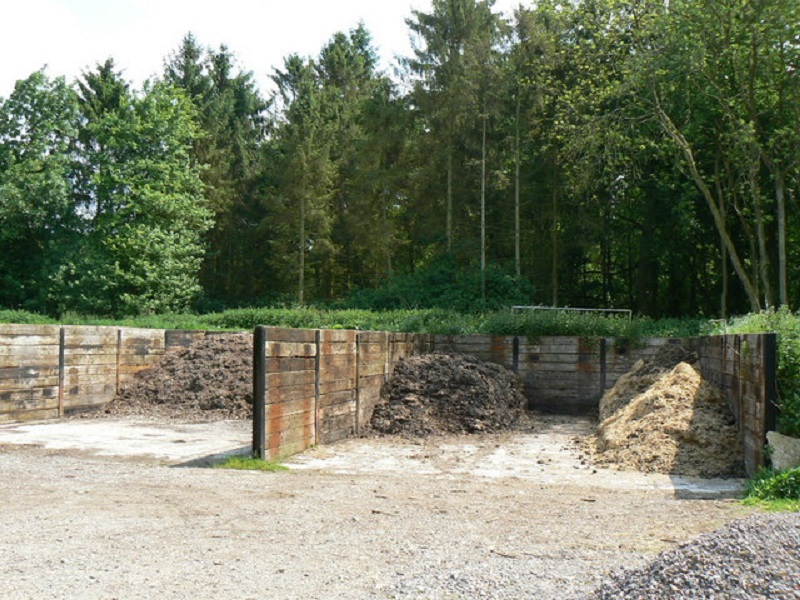
Photo: ©Sebastian Ballard/Wikimedia Commons
#46 Spread it on your fields. Horse manure is chock-full of nutrients that can improve soil condition and promote plant growth, making it a great alternative to costly fertilizers. If you spread it on horse pasture, the manure should ideally be composted first to eliminate any parasites.
GROOMING & CARE
The amount spent on grooming and miscellaneous horse care products varies widely depending on what you do with your horse – from $100 for the “au naturel” horse to $1000 and up for the serious show competitor.
#47 Buy big. It’s cheaper to purchase fly spray and coat shining products in gallon containers. These can be used to refill spray bottles which you can find at any dollar or discount store.
#48 Purchase concentrated products, such as supplements and fly spray. The initial outlay will pay for itself.
#49 Buy everyday essentials at the dollar or drugstore. Products such as sunscreen, Vaseline, aloe vera, baby wipes, diaper rash cream, sponges, hair brushes, and topical wound treatments can make an effective and inexpensive alternative to pricier products that exclusively target equestrians. Other suggestions include hairspray and gel to tame unruly manes and tails, disposable diapers for use as a hoof poultice, and sanitary napkins for applying pressure to and bandaging wounds.
#50 Share expensive purchases. Quality is always a good investment. If you have your heart set on expensive grooming equipment, such as body clippers or a horse grooming vacuum, go in on it with a fellow boarder or horsey friend.
TACK & GEAR
A 2010 survey of horse owners in Canada showed that the average owner has invested over $11,000 in tack, with the cost of tack replacements representing an annual expenditure of roughly $600 per year.
#51 Become a savvy shopper. Use tack shop sales as an opportunity to stock up on items you know you’ll need. Plan out your tack purchases ahead of time and then keep an eye on sales throughout the year to see if anything becomes marked down. Take advantage of end-of-season sales – for example, purchase next year’s winter rugs in early spring when stores are clearing out winter stock at discounted prices.
#52 Buy the best you can afford. It’s more economical in the long run to invest in good quality tack and gear that will last a lifetime (or at least several years) rather than cheap equipment that needs to be replaced every season.
#53 Take good care of your tack and gear. Cleaning and storing your equipment properly will help increase its longevity. Leather tack should be wiped off after each use and given a thorough cleaning and conditioning on a less frequent but still regular basis. Machine washable saddle pads, leg bandages, and boots should be laundered regularly, and grooming and other miscellaneous tools washed and scrubbed. Stow your horse gear in an area that is protected, rodent-proof, well-ventilated, and away from extreme temperatures.
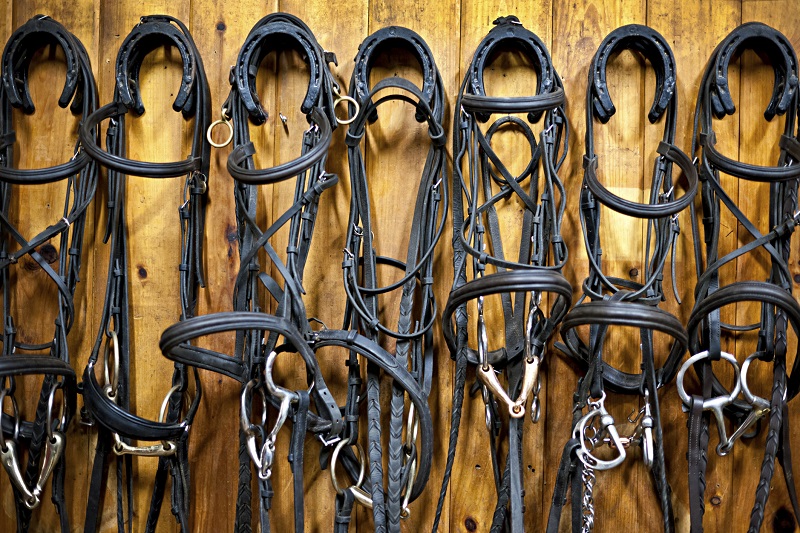
Photo: Elenathewise/Stock Photos/Photos.com
#54 Convert clutter to cash. Consider selling what you do not need or use. Post items on Craigslist, take them to a used tack shop in your area, or get together with friends and hold a horsey yard sale. You can use the money you collect to purchase equipment you really need.
#55 Shop second-hand. You may be able to find used tack, blankets, and apparel (never purchase a used riding helmet) still in good condition at someone else’s horsey yard sale, in the consignment section of your local tack store or online on websites such as eBay, Craigslist, or Kijiji.
#56 Repair rather than replace. Many tears in horse blankets and broken straps on leather tack can be repaired at a much lower cost than the price of a replacement item. Your local tack store should be able to recommend someone in your area who can do blanket and leather repairs.
#57 Host swap-meets or trades. Coordinate a time and place for horse owners at your barn or in your area to bring any tack, riding apparel, and other gear they no longer need or want. Then swap and trade to your heart’s content (if the value of the items being swapped is unbalanced, small amounts of cash can even things out). Remember to clean your items before the swap-meet to appeal to fellow traders.
#58 Clean and re-waterproof your own horse blankets. Remove as much horse hair as you can with a stiff dandy brush or vacuum cleaner and wash the blanket according to the manufacturer’s instructions to avoid destroying the insulating fill or waterproof coating. If the blanket is too bulky for your washing machine, find a laundromat with industrial-size machines. Re-waterproof if needed – there are many waterproofing agents specifically designed for horse blankets.
#59 Put your name on your belongings. Whether left behind at a horse show or borrowed by a fellow boarder who forgets to return it, lost gear and equipment can be costly to replace. Mark your equipment clearly with your (or your horse’s) name to help misplaced or borrowed items find their way back to you.
#60 Put your sewing skills to good use and make your own polo wraps, saddle pads, coolers, halter fuzzies, and if you’re feeling particularly ambitious, riding apparel. Check out the many patterns available online.
TRAILERING & TRANSPORT
Studies show that in 2010 Canadian horse owners who trailered their own horses spent an average of $1350 annually on transport-related expenses. Their counterparts who purchased horse trailering and transportation services spent an average of $1720 per year. On the face, this seems to indicate that purchasing a horse trailer is a worthwhile investment; however, an accurate assessment of the value of trailer ownership must take into account other factors such as frequency of use and average length of trip.
#61 Share the cost of a trailer. Reduce your initial investment costs by going in on the purchase with a horse owner friend or neighbour.
#62 Keep up with regular maintenance. Your truck and horse trailer represent significant investments. Protect these investments with regular service checks and repairs.
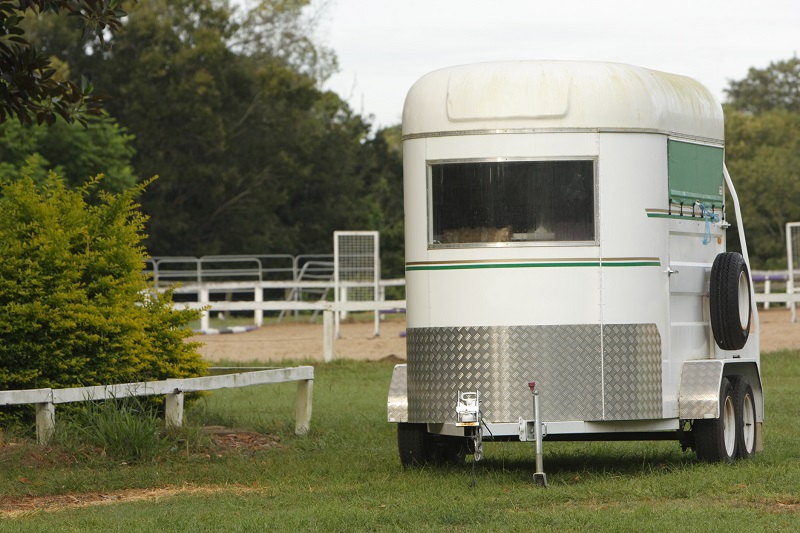
Photo: Craig Digle/Stock Photos/Photos.com
#63 Learn to perform basic maintenance. Take a course in vehicle or machinery maintenance to learn how to perform minor repairs and routine servicing such as oil changes.
#64 Clean your trailer regularly to remove traces of manure and bedding which can encourage corrosion and condensation.
BOARDING
Depending on the location, facilities, and type of service provided, the cost of horse board can range from $100 for self-care pasture board to upwards of $1500 per month for all-inclusive board at a fancy show barn. For the standard “no frills” full board option at a barn with basic facilities, horse owners can expect to pay at least $500 per month.
#65 DIY with self or semi-board. With self-board, you are responsible for buying your own hay, feed, and bedding, and for doing the feeding, cleaning, turning in and out, blanket changes, and other chores associated with caring for your horse. Semi-board is similar to self-board with the exception that some of the daily chores are handled by the barn owner.
#66 Team up with fellow boarders. Organize a rotation with the other boarders for mucking out, turnout and feeding, so you can all save money and get some mornings/afternoons off.
#67 Consider pasture board, which is offered by some facilities and is usually a much cheaper option than stable boarding. If you decide this option might work for your horse, you must ensure there is a constant, reliable source of safe drinking water (streams, ponds, and snow do not count!) and some form of shelter.
#68 Work off your board. Ask the stable owner if you can help out with various barn chores, such as feeding, cleaning stalls, or turning horses in and out in exchange for reduced board fees.
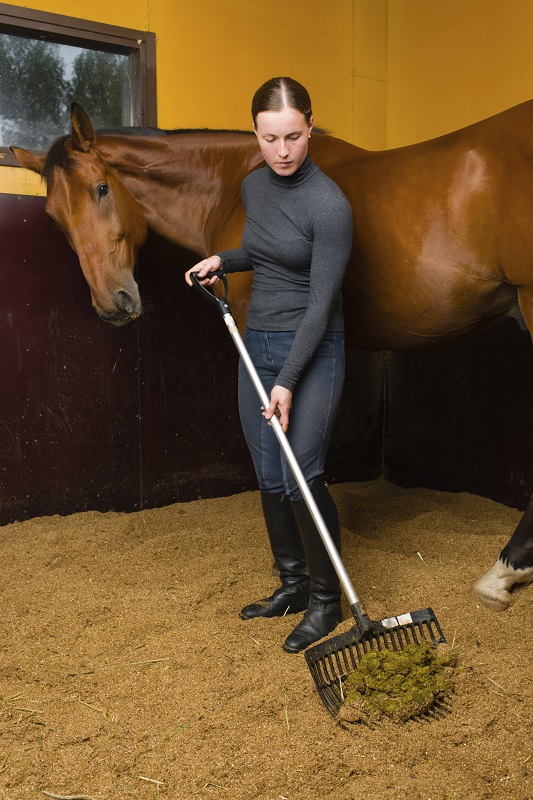
Photo: Jari Hindström/Stock Photos/Photos.com
#69 Lease your horse out. Sharing your horse is a great way to save on the monthly cost of ownership, but you should always have a contract to protect yourself and make sure your insurance policy covers your horse when he is being ridden or handled by someone else.
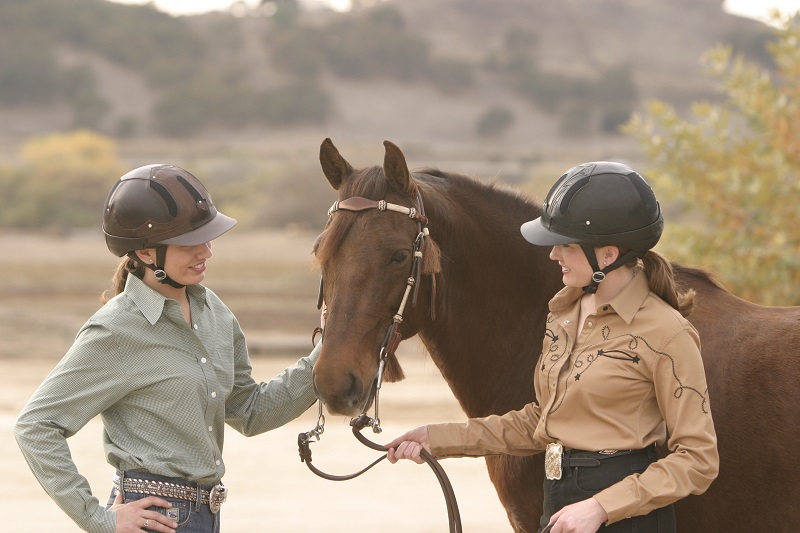
Photo: Troxel
LESSONS, CLINICS & TRAINING
On average, Canadian horse owners spent an estimated $100 to $175 per month on riding lessons, while the average expenditure on professional horse training services was calculated at approximately $175 per month.
#70 Cut back. If you’re currently taking private weekly lessons, consider switching to semi-private, group, or biweekly lessons. If you have to cut back on lessons, ask someone to video your riding or have an experienced friend give you tips.
#71 Audit clinics instead of participating as a rider or driver. Bring a notebook and pencil for jotting down notes to make the most of the clinic.
#72 Work off your lessons. This is not always an option, but if your coach or trainer is looking for help with barn chores you could offer to help out in exchange for reduced lesson fees.
THE BOTTOM LINE
It’s a universal truth that horse ownership is expensive, and trying to reduce those costs is challenging, yet often the biggest benefits can be realized with long-term planning, and by looking at the big picture.
#73 Keep a horse expenses budget. To rein in your horse expenses you first need to identify them. Make a list of your fixed and variable monthly expense categories such as feed, bedding, vet/farrier, board, supplements, lessons, insurance, tack, and equipment, then gather every receipt you can find and fill in the expense amounts. Once you have a solid picture of your horse expenditures, it will be easier to plan for future purchases and make other budgeting decisions. Review your budget monthly and revise as needed.
#74 Volunteer and donate. Support your local horse club or charity by offering your time and expertise, or by donating to their cause. Everyone has something to give, and no matter how small your contribution, it will make a difference, perhaps by allowing improved services to be provided, or by helping to keep costs under control resulting in more affordable participation in horse activities for everyone’s benefit.
#75 Be a lifelong learner. We never graduate from the School of Horses – there is always more to learn. The more knowledge you acquire about horse care and management, the better equipped you will be to prevent problems before they occur, understand the financial implications of your decisions, and handle potential budget-breakers in the most cost-effective manner.

*All statistics in this article appear in the 2010 Canadian Horse Industry Profile Study.
This article was originally published in 2014. Some of its information may be outdated.



